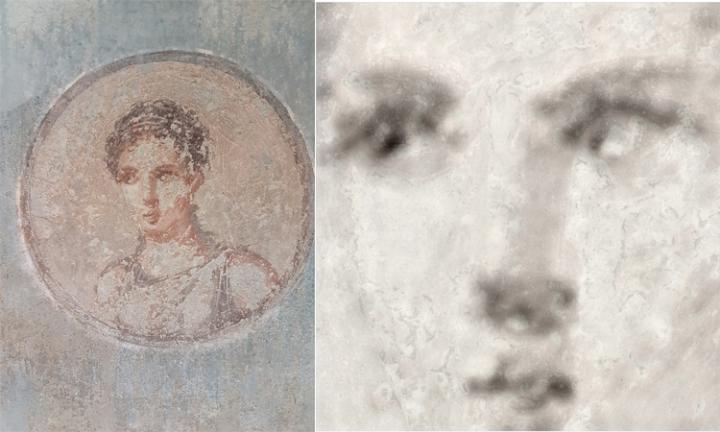
Scientists are taking a portable macro X-ray fluorescence (macro XRF) instrument into the ruins of an ancient city, scanning fragile artwork, and reading each pencil line and brush stroke through trace elements left on the canvas. Their objective is to breakdown artwork into its component parts so that conservationists can create tailored preservation strategies based on the chemical compounds of individual works of art.
The scientific team, led by Professor Eleonora Del Federico of the Pratt Institute, is working with the Herculaneum Conservation Project, a group dedicated to the preservation of the ancient Roman city.
Herculaneum, located on the coast near modern day Naples, was destroyed with Pompeii when Mount Vesuvius erupted in 79 CE. The volcano entombed Herculaneum in a time capsule made of ash and debris, perfectly preserving items like wood and fibers that would usually not survive the ravages of time. Unfortunately, early excavations “broke the seal,” letting in air and other contaminants that began eating away at the fragile remains of the city. Conservators have since been charged with saving the irreplaceable artifacts, but to do so, they need some pretty sophisticated techniques, which brings us back to Del Federico.
Professor Del Federico and her team took their macro XRF machine into Herculaneum and focused its beam on a painting of a young woman. Thanks to the machine, the team was able to examine the fragile painting without moving it out of the city and they were able to analyze the artwork without damaging it. The XRF instrument can do its job without touching the artwork and without needing to collect fiber samples from the canvas.
After scanning the painting, Del Federico’s team found the artist used an iron based pigment to sketch the woman’s image. They discovered her eyes were highlighted with a lead pigment and her cheeks were full of potassium. Based on their results, the group created an “element map,” basically recreating the image through trance remnants no longer visible to human eyes.
In a statement describing her work, Professor Del Federico said,
"Science is allowing us to get closer to the people who lived in Herculaneum. By unraveling the details of wall paintings that are no longer visible to the naked eye, we are in essence bringing these ancient people back to life. And learning more about the materials and techniques they used will help us to better preserve this artistry for future generations.”
She and her team presented the results of their work at the 254th National Meeting and Exposition of the American Chemical Society. Their abstract can be found here. https://ep70.eventpilotadmin.com/web/page.php?page=IntHtml&project=ACS17FALL&id=2736341



